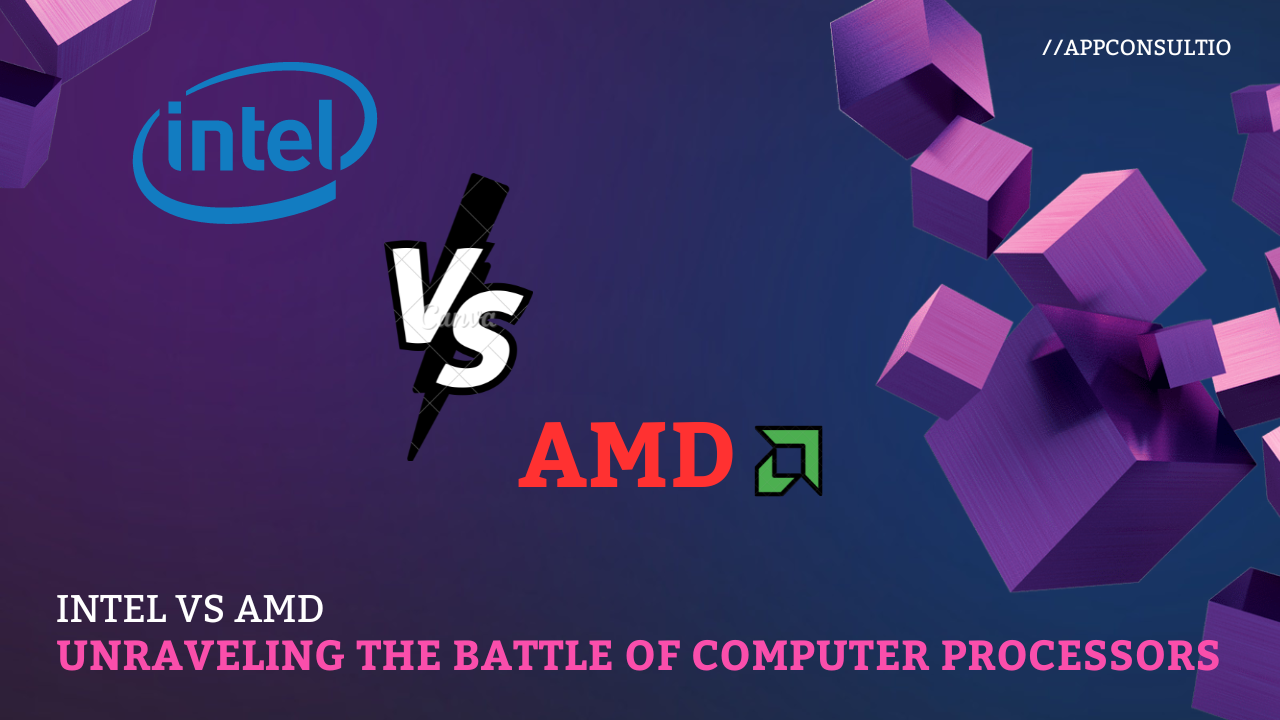
What is Intel?
Intel, which stands for Integrated Electronics, is a big tech company from the United States. They're in Silicon Valley, California. A smart person named Robert Noyce made Intel. They made the Intel 8086, a really important computer part. Intel has many kinds of processors, like a scale from 1 to 10. They're good at doing computer tasks quickly.
Intel's parts work faster than some other ones, but they use more power and need more battery. So, they're good for laptops that want to do quick tasks but don't need a long battery life. If you want to change pieces in a computer, like the brain (processor) or the part it fits into (socket), Intel has fewer choices than other companies like AMD. This is because Intel changes their stuff a lot.
They have different types of processors, like Intel Core m, Intel Core i, and Intel Xeon. These all do different jobs in computers.
What is AMD?
AMD, which stands for Advanced Micro Devices, is a big company from America. They're in California. Some smart people named John Carey, Jack Gifford, and Jerry Sanders made AMD. AMD makes computer parts called processors. They started by making processors that are like another company's. They became rivals to Am386.
AMD processors are like a scale from 1 to 10, mostly between 5 and 10. They cost less than similar Intel processors. AMD processors work better than the latest Core series from Intel. AMD's APUs are also good because they do well with tasks and have better graphics. Laptops with Ryzen processors last longer on a battery and are quieter than ones with Intel processors.
For laptops that last a long time and do good graphics, Ryzen laptops are good. But for desktops or devices used every day, Ryzen APU is best. For heavy jobs like 3D work or video editing, CPUs like Ryzen 7 or 9 are good. When using AMD parts, it's important to check if the motherboard works with them. Some need an update before they can work.
AMD makes different processors, like AMD Threadripper and AMD Ryzen. They are for different things like gaming or heavy work.
Difference Between Intel and AMD -
1. Cost Efficiency - At the lower price range, Intel processors tend to be less expensive compared to AMD ones. Conversely, as you move into the higher price range, AMD processors generally offer better value and are less expensive compared to Intel counterparts.
2. Heating - Using a Clock Speed Boost of 14nm may lead to increased heat generation in the case of Intel processors. In contrast, AMD processors typically maintain lower temperatures due to their smaller lithography, which enables efficient heat dissipation. It's worth noting that the TSMC 7nm process is comparable to Intel's 10nm process in terms of performance and thermal characteristics.
3. Efficiency - Intel processors exhibit a higher level of efficiency compared to AMD counterparts, while AMD processors, on the other hand, are generally less efficient in comparison to Intel processors.
4. IGPU - When considering Intel processors, it's notable that the majority of the Core i series come equipped with integrated graphics (except for the Core i F-series). In contrast, AMD processors feature integrated graphics exclusively in the AMD APU series, where the GPU performance surpasses that of Intel's integrated graphics.
5. Clock Speed - Intel's processors are known for achieving clock speeds that can surpass 5.0 GHz, demonstrating their capability for high-frequency performance. On the other hand, while AMD's processors may also reach 5.0 GHz, it's important to note that doing so can result in higher heat production.
6. IPC - Comparing the two, the IPC (Instructions Per Clock) of Intel's Rocket Lake architecture is lower when compared to AMD's Zen 3 architecture. Conversely, AMD's Zen 3 architecture boasts a higher IPC than Intel's Rocket Lake.
7. Multiprocessing capabilities - Intel's symmetric multiprocessing capabilities extend to 4 sockets with a maximum of 28 cores, while AMD's capabilities in symmetric multiprocessing can scale up to 8 sockets, accommodating an impressive 128 cores.
Conclusion - In conclusion,Intel and AMD are prominent technology companies that design processors for various computing needs. Intel, originating from Silicon Valley, offers a range of processors known for quick performance, albeit with higher power consumption. On the other hand, AMD, rooted in California, presents processors that often provide better value, efficiency, and graphics performance, catering to diverse tasks. Their differences in cost, heating characteristics, efficiency, integrated graphics, clock speeds, IPC, and multiprocessing capabilities offer users a spectrum of choices for computing solutions.